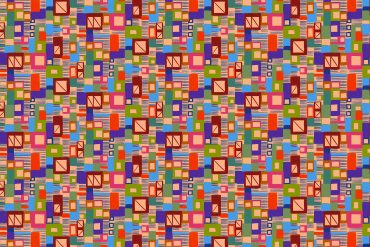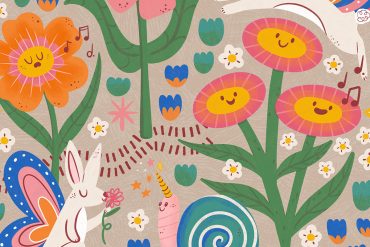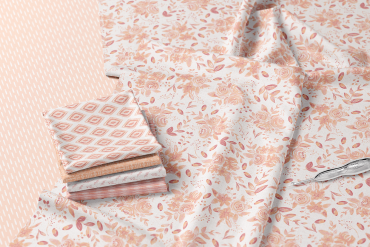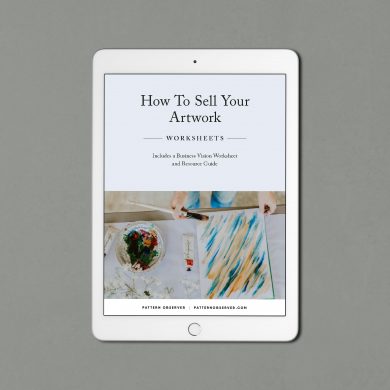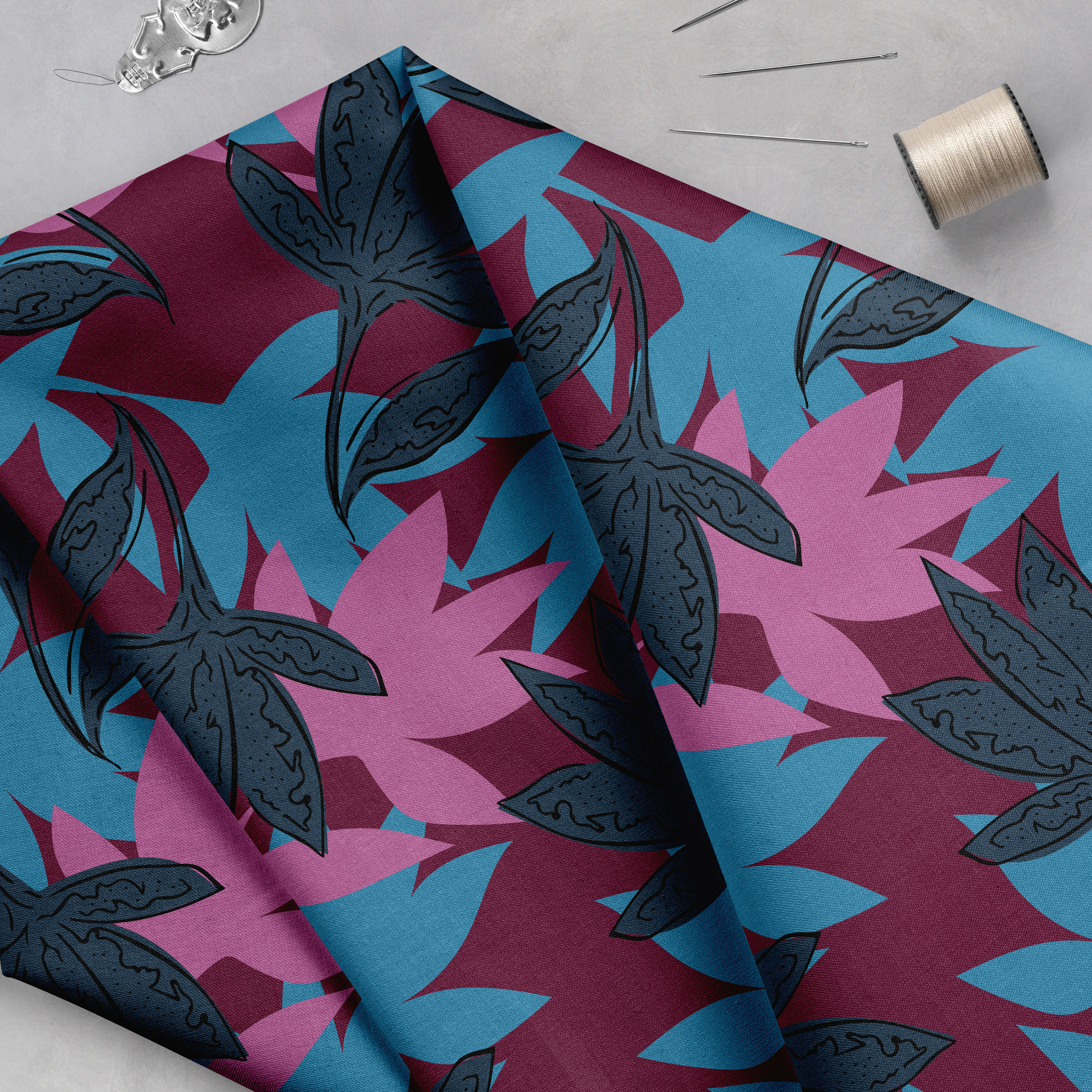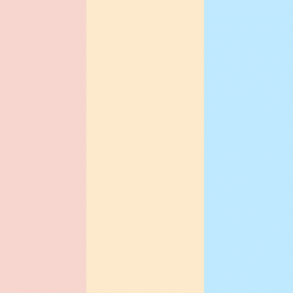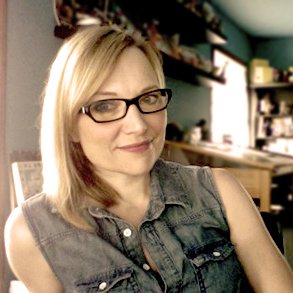
1. Tell us a bit about your design background/career path. What led you to illustration and pattern design?
First, thanks so much for asking me to do this interview! I love Pattern Observer and the knowledge you provide to pattern designers is fantastic! : )
I fell into pattern design quite by accident! All creatives have been making things their entire lives, and I’m no different. I was raised in an environment of “making stuff.” My parents grew up post-WWII, and there was literally nothing after it was over. If my mom wanted something more fashionable than what their family could afford, she found a way to make it (my gran taught her and her sisters to sew at an early age). She taught me to sew when I was nine, and as I got older, I was also copying things, making costumes and clothes, altering patterns, making art- until I’d graduated high school (and much later, I’ve made tons of costumes for my kids). My dad has a solid work ethic and believed (and still does) if you work hard enough at something, you can achieve it. He really imparted that drive on me. When I went to college though, he wasn’t sure about my going down the “commercial art” path, and worried I might not be able to make a living. I worked while I went to a community college, and as per my typical M.O. did not follow the itinerary of courses set down for the certificate or assoc. degree. I took classes I was interested in: Fashion Merchandising, Psychology, Photography, Figure Illustration, Design, Perspective, Advertising, and a boatload of others. I worked in children’s apparel retail while I was going to school, I merchandised and created displays. I watched how people shopped. I started to understand color stories and seasonal merchandise. When I leftschool (I did not finish my degree) I took some time off to figure out what I wanted to do. My dad was adamant about me working, so I took a job with Kmart Headquarters near Detroit in their advertising dept. as a layout merchandiser. I was very interested in the dept. next door: Childrenwear and Menswear Product Development. I got to know the designers, and the director, and asked what she likes to see from a potential candidate and if she would mind critiquing my book (portfolio). She gave me some pointers, and shortly after looked at my work. She bought two hand drawn prints on the spot, and created an assistant designer position for me (there hadn’t been that position there before). I taught myself simple software on the Mac while I was in advertising, and that laid down a foundation to learn Adobe Photoshop and Aldus Freehand. While working as an assistant, I gained so much from the people I worked with, some of them illustrators, some of them designers.
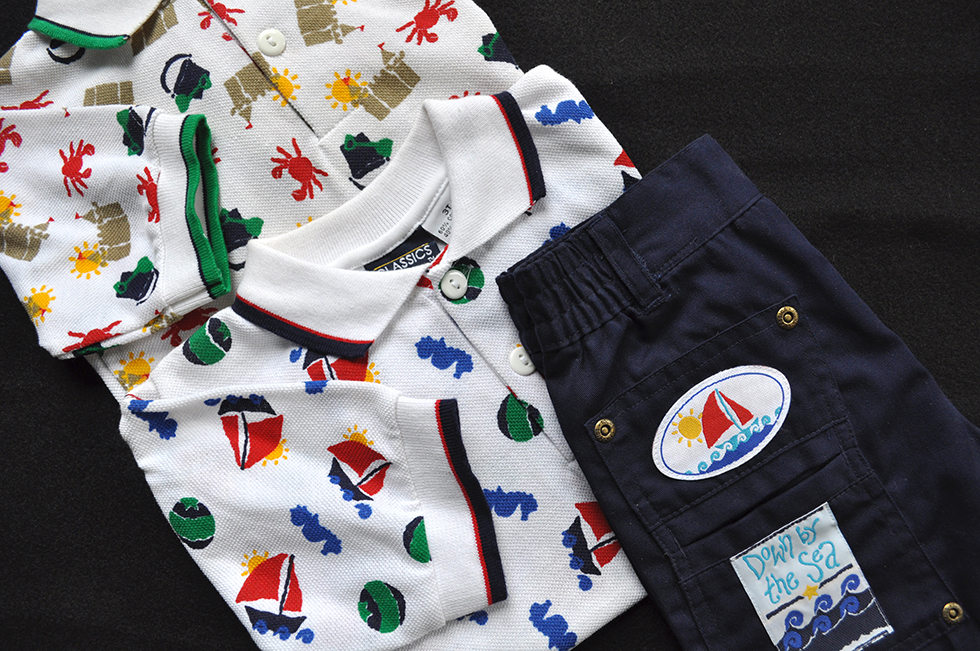
2. Could you talk a bit about designing for the children’s market? What do you feel makes a successful print for this market and what are some of the challenges? Do you have any advice for designers interested in pursuing this market?
Designing for children is not easy. If it looks easy, then we’re doing you a great disservice! Colors are very important, as well as motifs. Designing for small independent boutiques is quite different from designing for mainstream market retailers. You really need to know your customer, and the age range you’re designing for. The younger the market, the simpler the motifs have to be, and the colors can’t be too dirty for young kids, those palettes are too sophisticated. I have a lot of respect for newborn designers. Their work has to make sense to the customer yet it’s as pared down as possible. It’s truly a skill. I think boys are more challenging than girls, all ranges. First, girls have so many pieces you can work with, and, if a girl’s garment has blue in it, or is a little masculine, it can still be feminine (they have so many things with which to accessorize)! But if a boy’s garment has a motif that looks feminine, that won’t fly. I see boys wear pink, a lot! Solids or stripes though, anchored with darker neutrals, and key items like polos, not prints (okay, maybe summer prints, on a Hawaiian shirt). Usually, 3rd grade and up, but I think that’s changing. And before I get email about narrow thinking, it’s important to be more neutral, and one I share, with my own boys. Kids should wear what they want. However, If you’re designing for a company, you have to pull your personal beliefs out of it. By all means make suggestions, if you’re selling your own collections, design it how you want to, but when millions of dollars are behind something, buyers want something fresh but not so fresh that their customer won’t “get it.” If you want to design for kids, it helps to familiarize yourself with things kids like. If you don’t have kids around you, pick up teen ‘zines, children’s zines, visit the library and take a look at their new children’s books (graphic novels are really popular for tweens). Pay attention to children’s channels, what the actors are wearing on the popular shows. You can get a lot of information and inspiration, by putting yourself in their world. There are themes that will always be popular: florals, sports, transportation, conversationals. How can you create these themes in a new way? Unexpected color stories and interesting line work can do a lot to freshen up these types of themes. Speaking of color, you will likely be using a very restricted palette: usually 4-5 colors including a ground, so really have fun with using colors in areas that are out of your comfort zone.
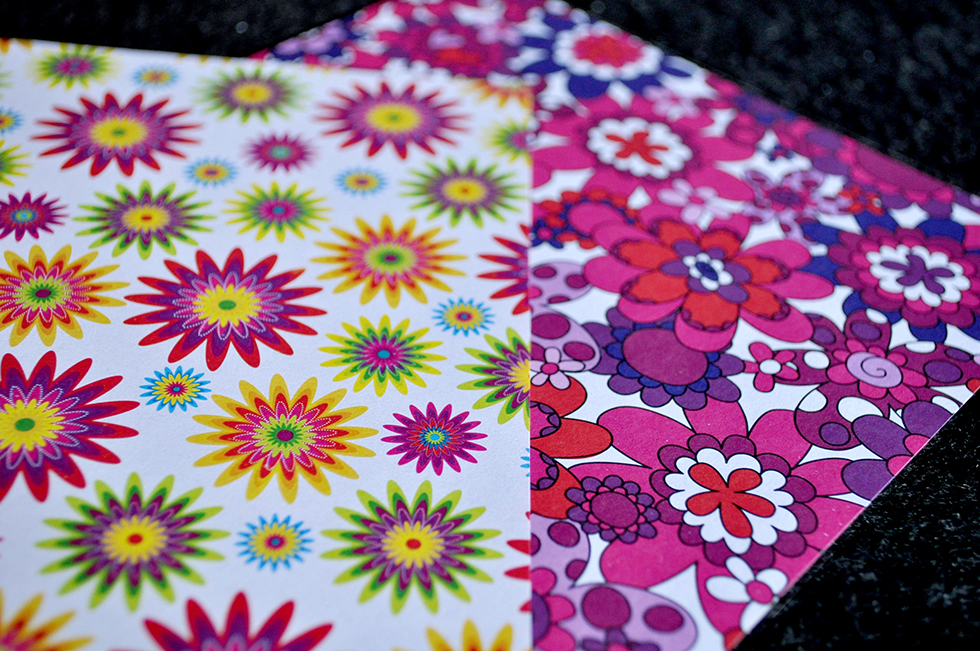
3. What role do trends play in your design process? What are your current favorite print and pattern trends?
I do follow some trends, depending on the season. Because I design a lot for children, the trends for young adults are a bit sophisticated. At the mind-mapping/rough stage of a project, I’ll look at trends, write them down, to spark other ideas, make some drawings. I do enjoy the challenge of translating some of those trends for a younger market. I’ve enjoyed a lot of the “blue” prints around lately, especially on scarves. I’m small, so while I can’t wear really large scale prints, I still really like them. Liberty prints and vintage ditsies are faves. I love botany, so botanical prints are fab as well. I like them because they can be delicate or bold, you can go in different directions with them. I also love prints used in unexpected places like sweet little treasures: a pocket or mac lining, the tongue of a shoe, the inside of a hood, or grosgrain inside of a waistband. I’m seeing more hand-lettering in pattern work which is fun. I also love the retro 50s-60s patterns: shapes and everyday things (e.g. kitchen utensils, silverware, Fire King type cookware, etc). In my own work, I try overlapping techniques, for instance, a lot of textures are used in my illustration, so I try to incorporate them into my pattern work as well. Sometimes it’s too much, and would be hard to print on fabric. But to experiment and push boundaries is important for your own creative growth.

4. Do you have any words of advice for aspiring designers trying to make their way in this industry?
Stay educated, keep going forward and learning new things… Keep doing and making and thinking and writing and drawing. Create and develop (not just follow) trends, help them evolve, after a little while, you’ll learn to anticipate them! Get comfortable talking about money. I don’t think I need to expand on that. If you’re uncomfortable, for your sake (if you’re going independent especially) get comfortable with talking about it. Also, be kind. That doesn’t mean be a doormat, but be professional and respectful. If a client makes you frustrated, if you need to express that frustration, keep names offline, please. Mean-spiritedness doesn’t help anyone, there’s just nothing productive to come out of shaming a specific person publicly. I ask for help, I ask for advice, I will post my work if I think the copyright’s been violated. But I think keeping things discreet will really build you a good reputation as someone who’s good to work with. That goes for works in progress as well, just always work under the assumption that there’s an NDA (non-disclosure agreement). Companies are investing a lot in you. In your skill and your talent. To expose work to the public could really impact your reputation, and potentially future work.
Self-promote!
It should be said again, that a mentor is important. I don’t know how much new designers understand what a good mentoring relationship could do for them. Getting a mentor is not always easy, but if you have an opportunity, I suggest you take it, and listen to and follow the advice they’re giving you. You may need a different mentor at different stages in your career. Sometimes it’s a relative, or a professor or a co-worker. There will be lots of time to go your own way and do your own thing, but a little heads up about etiquette, things you should or shouldn’t say/do, work ethics, professionalism, how to handle different personalities, when to be proactive/when to dial it back, will help you in ways you may not know yet. Join The Textile Design Lab to read the rest of this in-depth interview!
You can visit Andi at her website or connect with her on Facebook, Twitter, or Pinterest.




